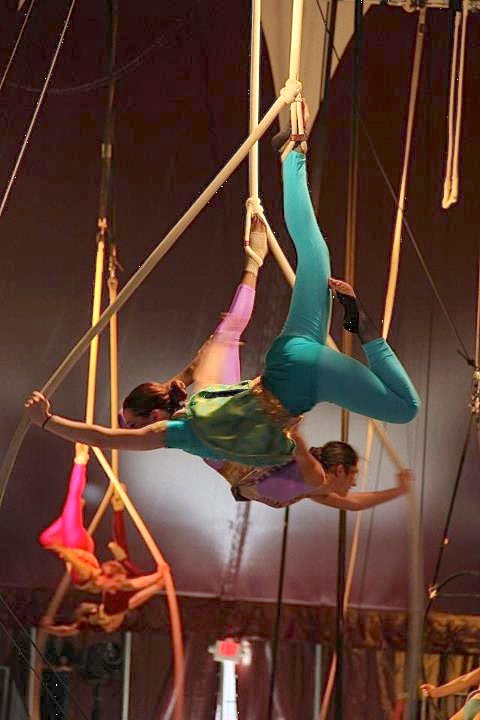
Just days before the March 30 opening night at the Florida State University Flying High Circus, students tweaked their acts in an ongoing practice ritual.
Acrobats balanced on thick mats and tossed each other in the air; a trapeze artist rocked and rolled on a candy apple-red “walking globe.” Clowns and high-wire athletes stretched their muscles and stood on their heads, while more students inspected racks of sparkly, eye-popping costumes and rows of Dr. Seuss-like props.
“If you work at it enough, you get good enough to perform,” said Chad Mathews, circus director and a former Flying High trapeze artist himself.
As the Flying High Circus celebrates its 65th year, performances have been polished to a high shine.
This year’s circus, “Around the World 2012,” features costumes in the bejeweled colors of a Brazilian carnival and daring, athletic acts that defy gravity.
Students juggle, dance and navigate the tightrope. Spacious and airy, the new big top boasts fewer — and more strategically placed — tent poles, making it easier for spectators to watch the action.
“It’s a pretty big deal as far as anniversaries go,” Mathews said.

For years, Florida State students from every academic discipline imaginable — from business to creative writing to engineering to theater — have been lured by the thrill of belonging to a real circus.
And the hope of acquiring new skills.
“I was first exposed to the circus when I was in high school,” said trapeze artist and business management major Ross Corristan, a junior from Jacksonville. Faced with the choice of the Coast Guard Academy or coming to FSU and joining the Flying High Circus, Corristan landed at Florida State.
“Hopefully this will lead to a career with a professional circus. I’d like to work in coaching, rigging or performing,” said Corristan, who also performs acts on the Chinese pole and the teeterboard.
It’s not unusual for Florida State’s High Flying performers to go on to careers in the circus, including Cirque de Soleil, Ringling Brothers or smaller, more regional troupes, Mathews said.
Students audition yearly and are placed in acts that match their skill sets.
The amount of training required to catapult a student from “novice” to “expert” varies depending on the complexity of the act and abilities of the individual.
“Some students are easier to train than others; and some acts are easier to train for — it really varies,” Mathews said, noting the safety is always the first priority.
“It’s a huge component and dictates our operation. We’ve had very few incidents and we’re always evaluating.”
Founded in 1947, Florida State’s Flying High Circus — which has also offered summer performances for the last 50 years at Georgia’s Callaway Gardens — was originally created to integrate men and women when FSU went first went co-ed.
It’s considered an extracurricular activity (the circus falls under the Division of Student Affairs). Students stitch their own costumes, build their own props, rig the equipment, and learn to operate sophisticated lighting and sound equipment.
According to Mathews, it’s one of only two college circuses in the United States (Illinois State University has its own circus as well) and remains a big draw for many students.
“It’s a passion,” Corristan said. “The whole reason I came to FSU was because I wanted to join the circus.”
The circus’s final performances of the season will be on Friday, April 13, and Saturday, April 14. For times and ticket information, call (850) 644-6500 or visit http://tickets.fsu.edu/.




